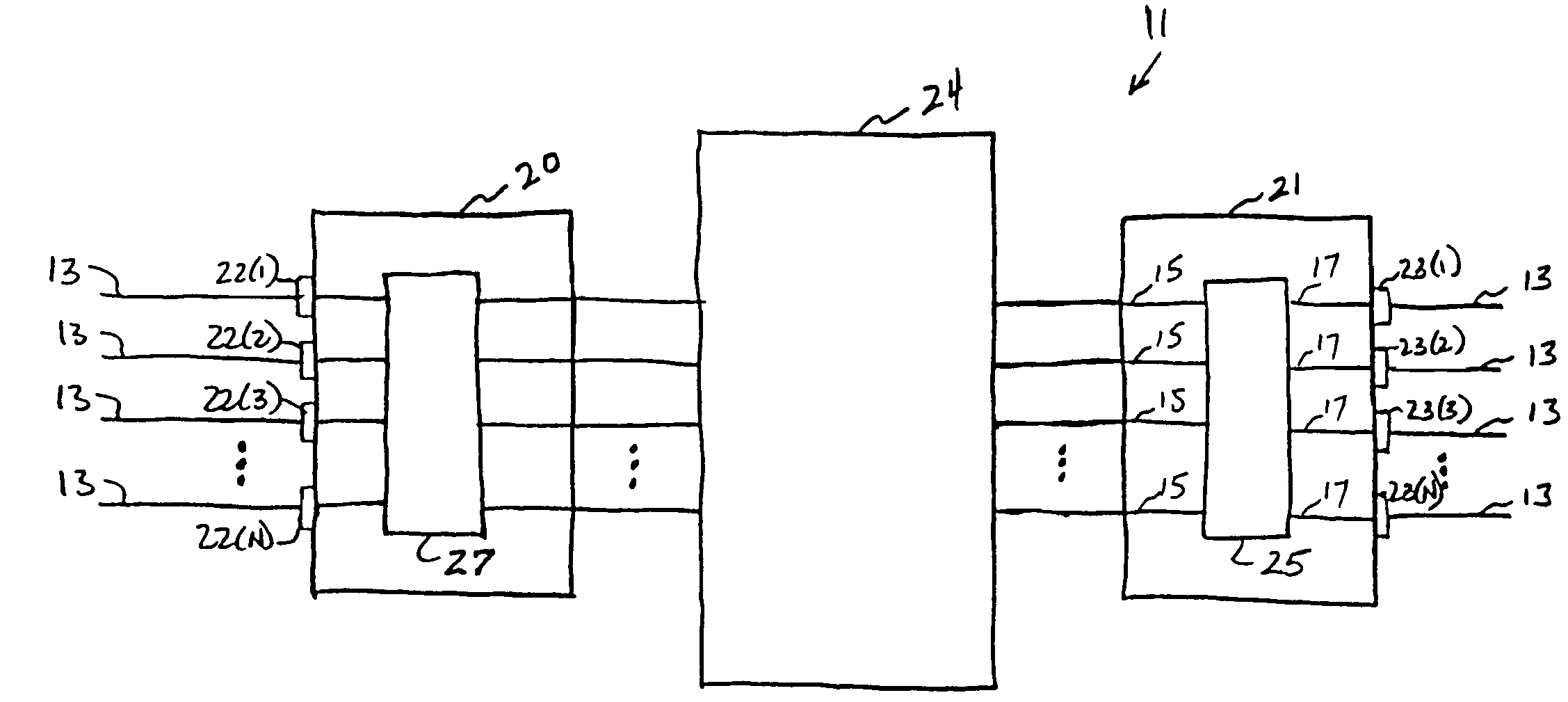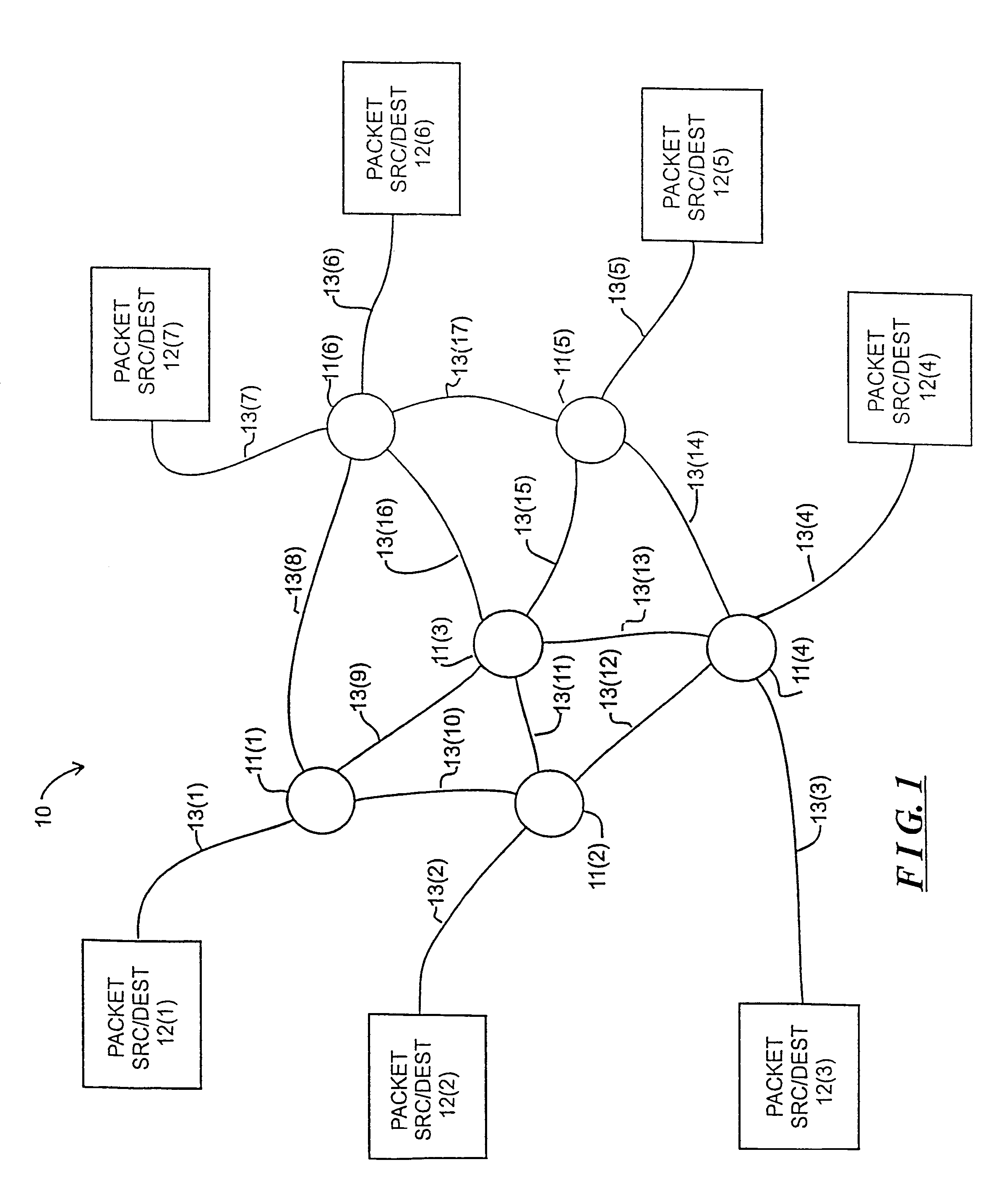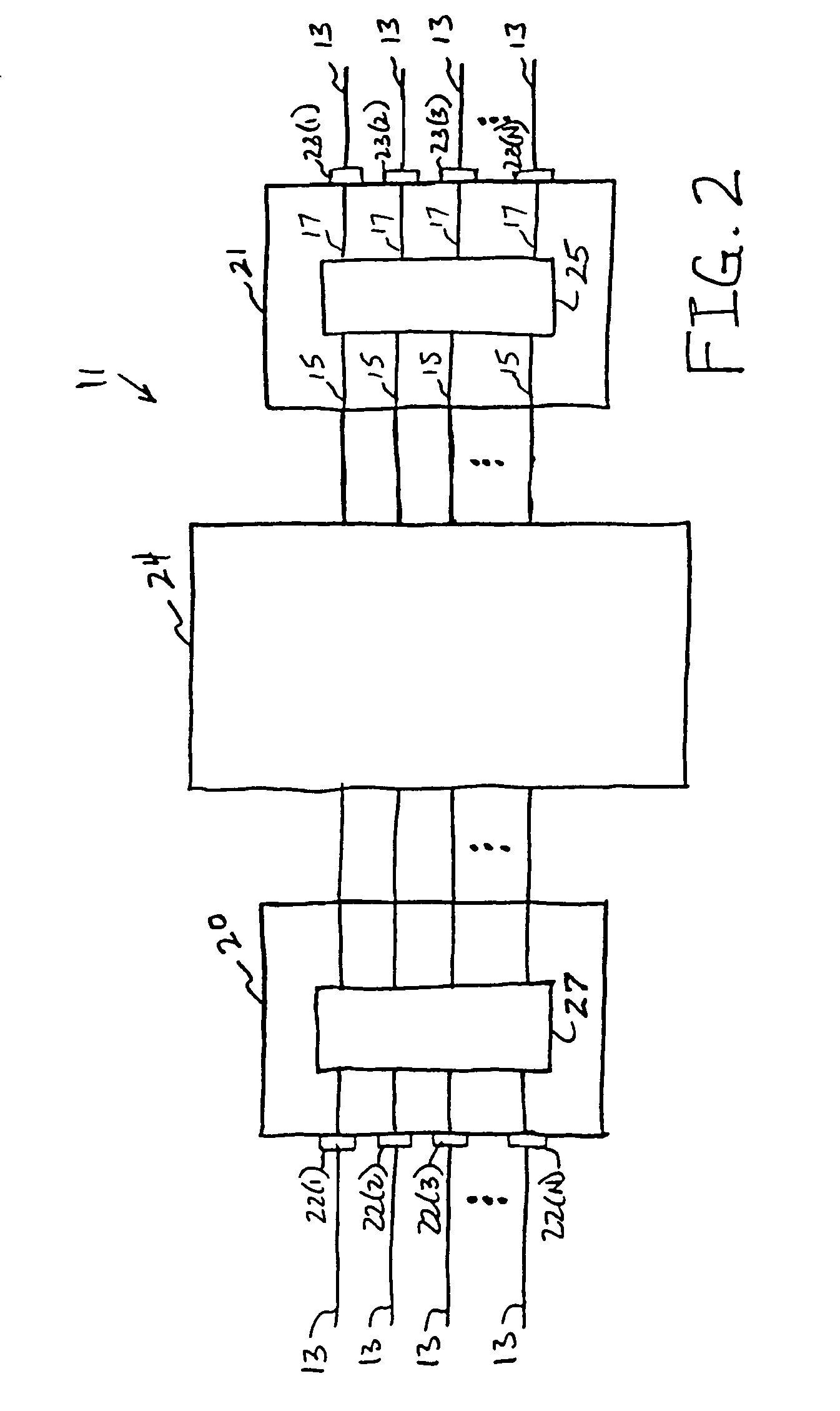Apparatus and method for controlling queuing of data at a node on a network
a technology of data queuing and apparatus, applied in the field of digital communication, can solve the problem of relatively low traffic carrying capacity of data nodes
- Summary
- Abstract
- Description
- Claims
- Application Information
AI Technical Summary
Benefits of technology
Problems solved by technology
Method used
Image
Examples
Embodiment Construction
[0020]FIG. 1 schematically depicts a computer network 10 including a plurality of switching nodes 11(1) through 11(N), generally identified by reference numeral 11, for transferring signals representing data among a number of devices, which in FIG. 1 are represented by packet source / destination devices 12(1) through 12(M), generally identified by reference numeral 12, in a wide area network (“WAN”). The packet source / destination devices 12 can include a particular device such as a computer system or other device that stores, generates, processes or otherwise uses digital data. It can also be a local area network of such devices. Each packet source / destination device 12 is connected over a communication link, generally identified by reference numeral 13, to a switching node 111 to facilitate transmission of data thereto or the reception of data therefrom.
[0021]The switching nodes 11 are interconnected by communication links, also generally identified by reference numeral 13, to facil...
PUM
 Login to View More
Login to View More Abstract
Description
Claims
Application Information
 Login to View More
Login to View More - R&D
- Intellectual Property
- Life Sciences
- Materials
- Tech Scout
- Unparalleled Data Quality
- Higher Quality Content
- 60% Fewer Hallucinations
Browse by: Latest US Patents, China's latest patents, Technical Efficacy Thesaurus, Application Domain, Technology Topic, Popular Technical Reports.
© 2025 PatSnap. All rights reserved.Legal|Privacy policy|Modern Slavery Act Transparency Statement|Sitemap|About US| Contact US: help@patsnap.com



